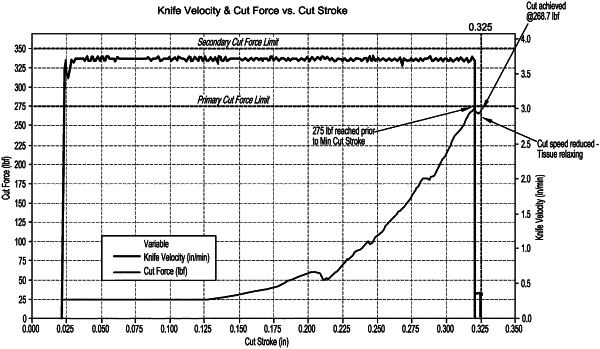| CPC A61B 17/1155 (2013.01) [A61B 17/32 (2013.01)] | 20 Claims |

|
1. A method of operating a surgical stapler, the method comprising:
advancing an annular knife of a knife assembly at a first velocity until a predetermined force on the knife assembly is detected;
increasing force applied by the annular knife above the predetermined force in response to the annular knife reaching a first position;
determining that the annular knife reached a second position distal of the first position, the distance travelled in reaching the second position corresponding to a minimum cutting stroke;
after the minimum cutting stroke is achieved advancing the annular knife at a second velocity when the force above the predetermined force is detected, the second velocity being less than the first velocity; and
continuing to advance the annular knife at the second velocity until the annular knife travels a cutting stroke distance.
|